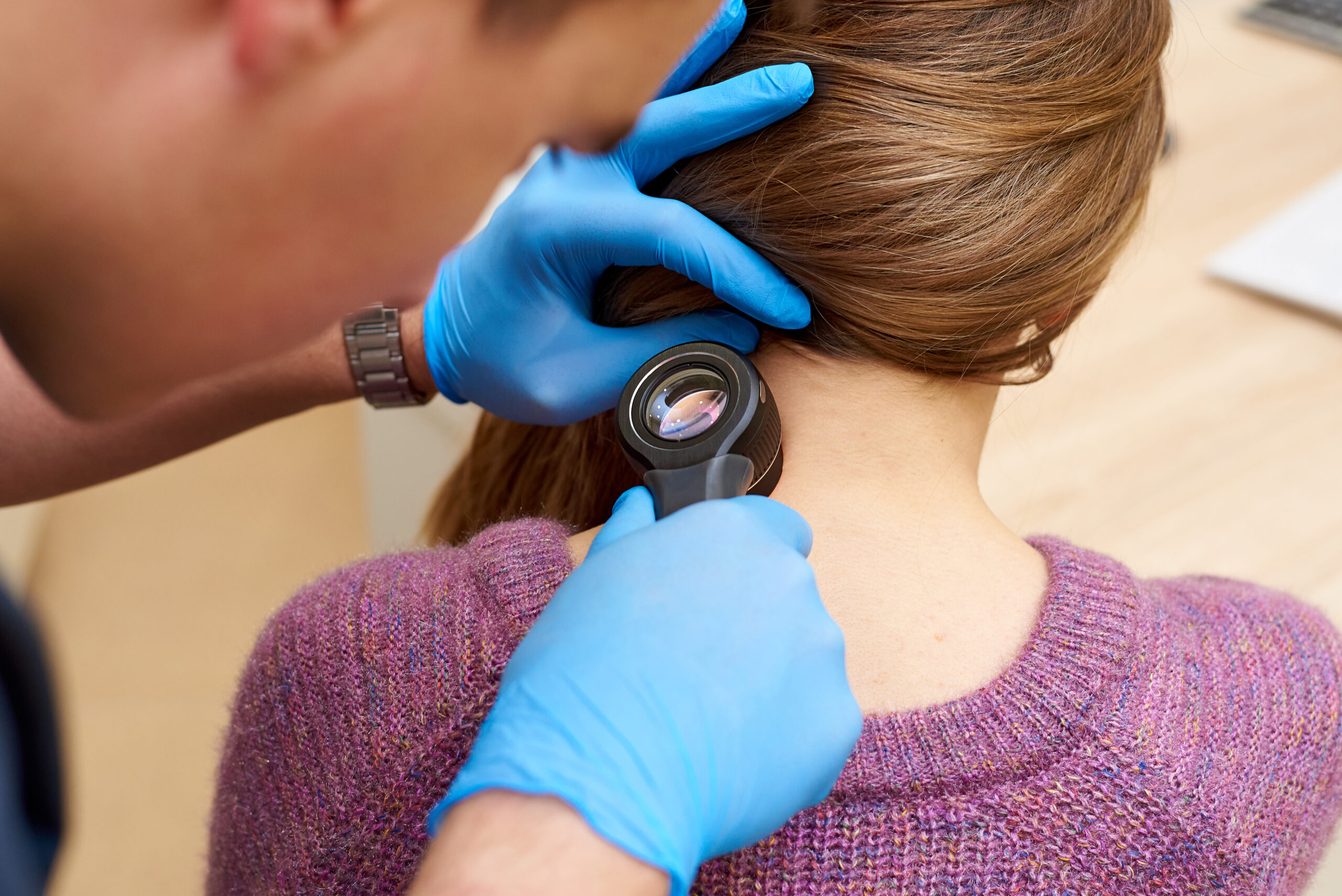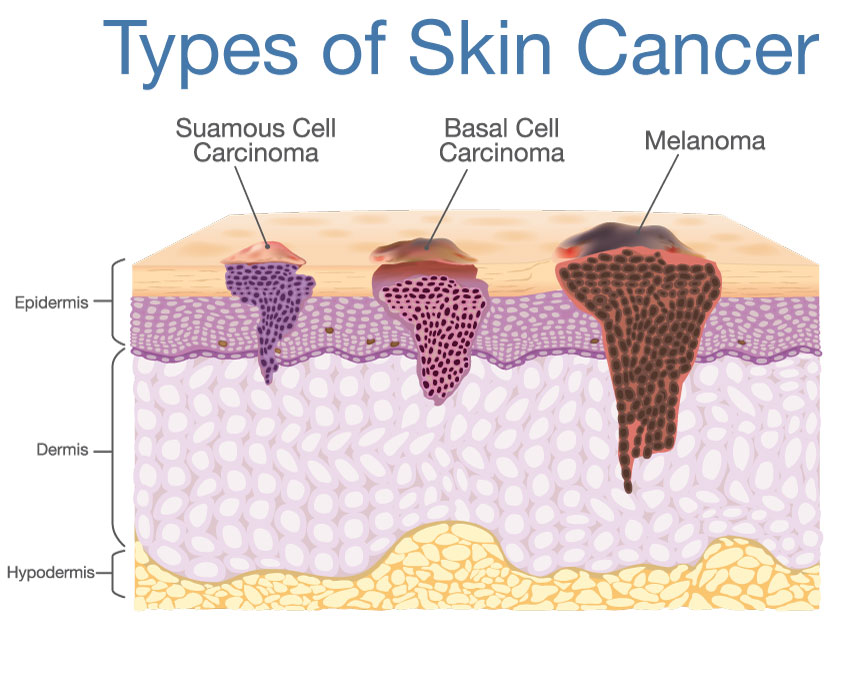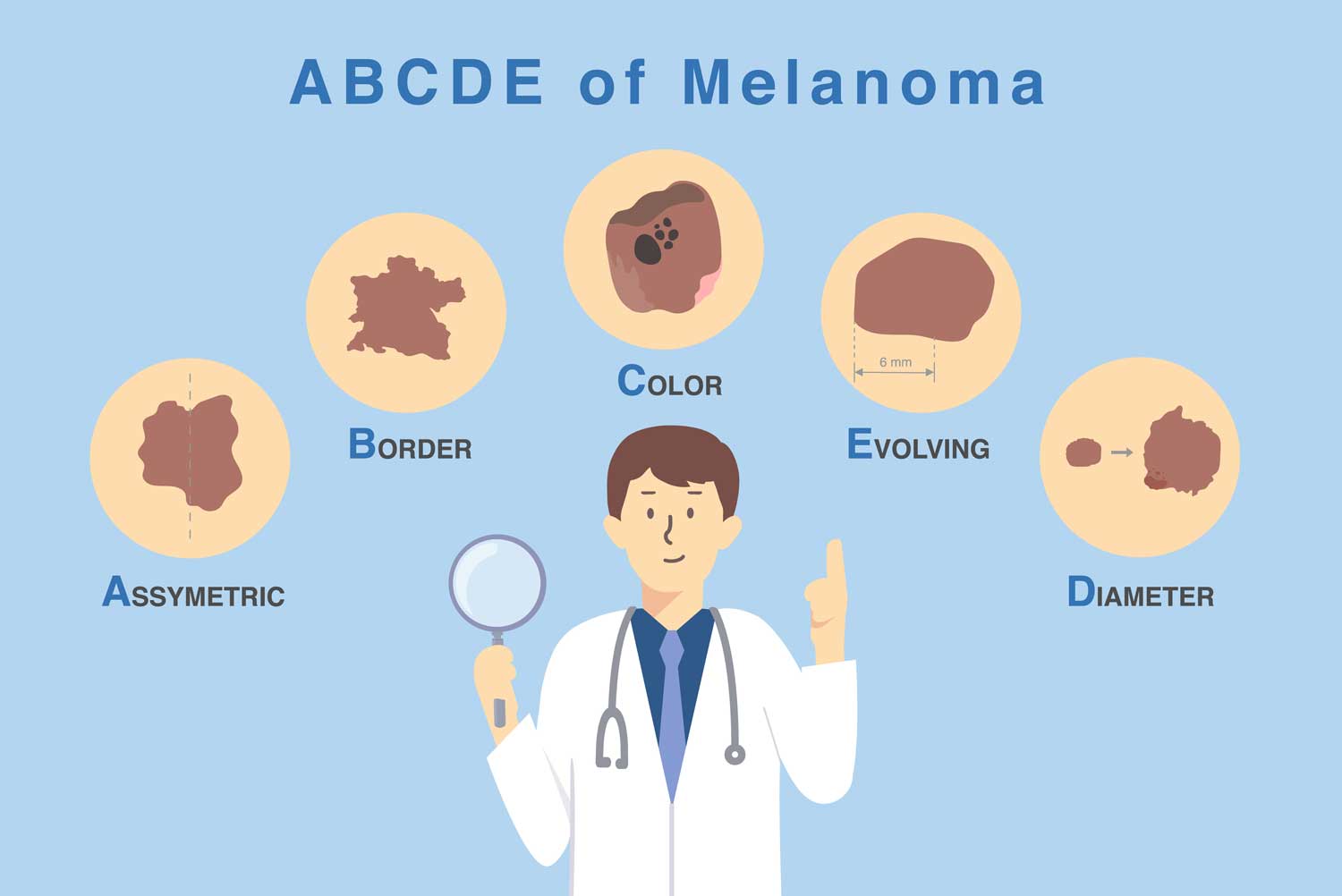
Skin Cancer affects 1 in 5 Americans, making it the most commonly diagnosed cancer in the US. While it’s often treatable when caught early, it can be life-threatening if left unchecked. Understanding the risks, symptoms, and prevention methods is crucial for everyone, regardless of age or skin type. By educating yourself about skin cancer, you’re taking an important step in protecting your health and potentially saving your life or the lives of your loved ones.
In this comprehensive guide, we answer the most common questions about skin cancer, helping you stay informed and protected against the invisible threat of UV rays.
We’ll start with the top thirteen essential skin cancer questions below covering prevention, diagnosis, and treatment, so you know what to watch out for when it comes to skin cancer.
According to TDS dermatologist and Mohs surgeon Dr. John Kamran Nia “We’re often told to watch out for asymmetric moles, and while that’s certainly true, its best to have a trained set of eyes look over your skin. Sometimes a skin cancer can mimic something benign like a pimple or even a scar.”
It’s an abnormal growth of skin cells which is usually caused by harmful rays from the sun. Caught early, skin cancer is highly treatable.
Skin cancer can take on a variety of appearances, which is why regular self-checks and professional examinations are crucial. Generally, look out for:
Remember, any new, changing, or unusual skin growth or mark should be evaluated by a dermatologist.
100%. The leading culprit for increased skin cancer rates we’ve seen over the last ten years is from tanning beds. Even just one session can double your risk of skin cancer. There’s no such thing as ‘just this once won’t hurt.’ Tanning beds are today what cigarettes were in the 50s…and likely headed for the same system of regulation.

While you cannot inherit the cancer itself, the likelihood of developing certain forms of skin cancer can be influenced by genetic factors, meaning that these risks can certainly be inherited from family members. The good news is, skin cancer prevention can and should begin in childhood – the number of sunburns you get before the age of 18 directly correlates with your skin cancer risk, especially if you are at higher risk due to genetic predisposition.
Melanoma, in particular, can be caused by inherited genetic mutations and is the most aggressive form of skin cancer. If you have a family history of melanoma, it’s critical to go for a screening regularly. If you spot it, you can stop it!
Your risk is increased if you have a family history of skin cancer. Families share genetic traits, so if one family member has a mutation associated with skin cancer, other members may also carry this mutation, increasing their risk. Additionally, while genetics play a significant role, environmental factors such as UV exposure also contribute to skin cancer risk. Families often share similar environments and lifestyle habits, compounding the genetic risk. Understanding these genetic links is crucial for early detection and prevention strategies:
Absolutely, and sometimes even with a topical cream. More severe forms will require an outpatient, very superficial surgical procedure that can be done over a lunch hour. Basal Cell Carcinoma and Squamous Cell Carcinoma are the two most common forms of skin cancer and are easily treatable with the above methods.
However, with Melanoma, early detection is critical as this form can spread through the bloodstream to vital organs very quickly. There are five stages of diagnosis that will determine how a skin cancer is treated; the earlier you are diagnosed, the better!
Recent advancements in treatments, such as immunotherapy and targeted therapy, have improved outcomes for many patients, particularly those with advanced melanoma.
By understanding the genetic factors that contribute to skin cancer risk, you can take proactive steps to monitor their skin health and reduce their chances of developing the disease.
It sure can—usually described as a non-healing sore, as in “I think I bumped my head or scratched a zit, but the darn thing just won’t heal.” The danger is that early stages of skin cancer may not look like much, but that doesn’t mean it’s safe to ignore. If you have a spot or sore that persists for weeks or longer, it could be a sign of Basal Cell Carcinoma. This is the most common form of skin cancer and tends to form on the most sun-exposed parts of our skin, such as the scalp, upper ears, face, and shoulders. Luckily, it’s the easiest to treat, but neglecting the signs can lead to serious implications. So be sure to pay attention!
If you notice any of these warning signs, make an appointment with a board-certified dermatologist specialist at The Derm Specialists right away.
Although itchy skin alone does not necessarily indicate skin cancer, it can be an early warning sign of something more serious. A cancerous mole or small blemish that is scaly and red can itch, tingle, be painful, or just “not feel like my normal skin.” Both basal cell carcinoma and squamous cell carcinoma are often likely to cause irritation. However, Melanoma, which is the deadliest form of skin cancer, can form as a painless mark or lesion and is less likely to cause any discomfort.
Yes, skin cancer can develop in areas not typically exposed to sunlight, such as the palms, soles, and under fingernails. This is more common in people with darker skin tones. Regular skin checks are important for early detection, particularly if you have inherited increased risk.
In addition to self-exams, it’s important to have your skin checked by a dermatology specialist at least once a year. During a professional skin exam, your dermatologist will carefully inspect your skin from head-to-toe, looking for any suspicious spots. This is especially important if you have a history of sunburns, excessive sun exposure, or a family history of skin cancer.
A thorough skin exam typically takes about 10 minutes. If your dermatologist finds a suspicious spot, they may recommend a biopsy to determine if it’s cancerous. The earlier skin cancer is detected and treated, the better the outcome. During your visit, your doctor can provide you with more information on how to prevent skin cancer based on your genetics, location, and lifestyle.

The stages of melanoma diagnosis are typically categorized into five main stages, from 0 to IV:
Diagnosing the stage of melanoma guides treatment decisions and provides information about the prognosis. It’s important to note that the staging of melanoma can be complex, with subcategories that further define the extent of the disease.
Recent advancements in skin cancer treatment include immunotherapy and targeted therapy, which use the body’s immune system or specific drugs to attack cancer cells. These treatments are particularly effective for advanced melanoma. Significant progress has been made with the approval of tumor-infiltrating lymphocyte (TIL) therapy for advanced melanoma, offering promising new options for patients.
Skin cancer is the most common form of cancer in the United States, with millions of cases diagnosed each year. The primary cause is exposure to ultraviolet (UV) rays from the sun and tanning beds. To reduce your risk, follow these skin cancer prevention tips:
Skin cancer prevention should always be your number one priority when heading outside. While you should be using SPF protection year-round (and yes, that means even when it’s cloudy or cold), the risk of skin cancer significantly increases during the summer due to longer hours of daylight. Understanding the risks and symptoms of skin cancer is crucial for prevention and early detection.
If you are concerned about skin cancer or are seeking treatments for sun damaged skin, The Dermatology Specialists offer medical and cosmetic procedures, including exams for skin cancer prevention, across multiple locations. Our board-certified dermatologists are experts in a variety of treatments for the maintenance of youthful skin. We’re the largest growing dermatology group in the northeast, making it easy to visit any of our offices.
If you found this article useful, please share it to help keep your friends and family sun-safe year-round.
For more information about skin cancer statistics, prevention, detection, and treatment, check out these highly regarded resources:
While skin cancer can be deadly, especially if left untreated, the mortality rate varies depending on the type and stage of the cancer. Basal cell and squamous cell carcinomas, the two most common forms, are highly treatable when caught early and rarely spread beyond the skin. However, melanoma, the most aggressive form of skin cancer, can be life-threatening if it spreads to other parts of the body. That’s why early detection and treatment are critical. When caught in its earliest stages, the 5-year survival rate for melanoma is 99%.
While only a medical professional can diagnose skin cancer, there are warning signs you can look out for:
For melanoma specifically, remember the ABCDE rule:

If you notice any of these signs, make an appointment with a board-certified dermatologist specialist at The Derm Specialists right away.
The primary cause of skin cancer is exposure to ultraviolet (UV) radiation from the sun or tanning beds. Other factors that can increase your risk include:
While some risk factors (like skin type and family history) can’t be changed, you can control your UV exposure to significantly reduce your risk.
Protecting your face from skin cancer involves several strategies: